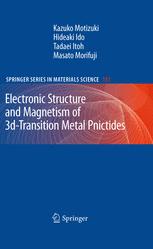

Most ebook files are in PDF format, so you can easily read them using various software such as Foxit Reader or directly on the Google Chrome browser.
Some ebook files are released by publishers in other formats such as .awz, .mobi, .epub, .fb2, etc. You may need to install specific software to read these formats on mobile/PC, such as Calibre.
Please read the tutorial at this link: https://ebookbell.com/faq
We offer FREE conversion to the popular formats you request; however, this may take some time. Therefore, right after payment, please email us, and we will try to provide the service as quickly as possible.
For some exceptional file formats or broken links (if any), please refrain from opening any disputes. Instead, email us first, and we will try to assist within a maximum of 6 hours.
EbookBell Team

4.0
86 reviewsThis book presents the results of investigations into the magnetic properties of 3d-transition metal compounds. In particular, it deals with 3d-metal pnictides (i.e., compounds containing phosphorus, arsenic, antimony or bismuth). Part I reports the experimental data together with phenomenological discussions from fundamental and application view points. Part II addresses how some of interesting behaviors mentioned in Part I can be explained on the basis of an itinerant electron picture. Band structures obtained by first-principle calculations are applied to introduce theories to calculate various properties such as susceptibility, magnetic ordering, and magnetic transitions, etc.